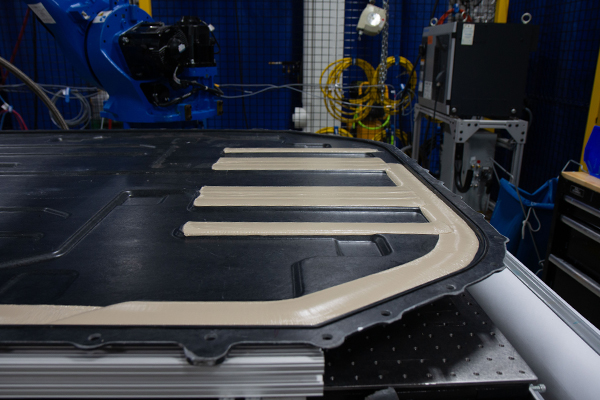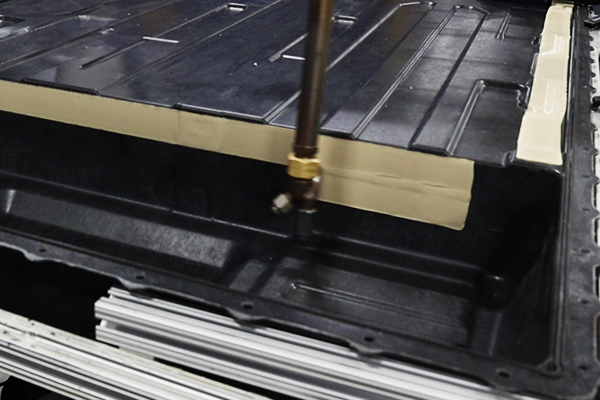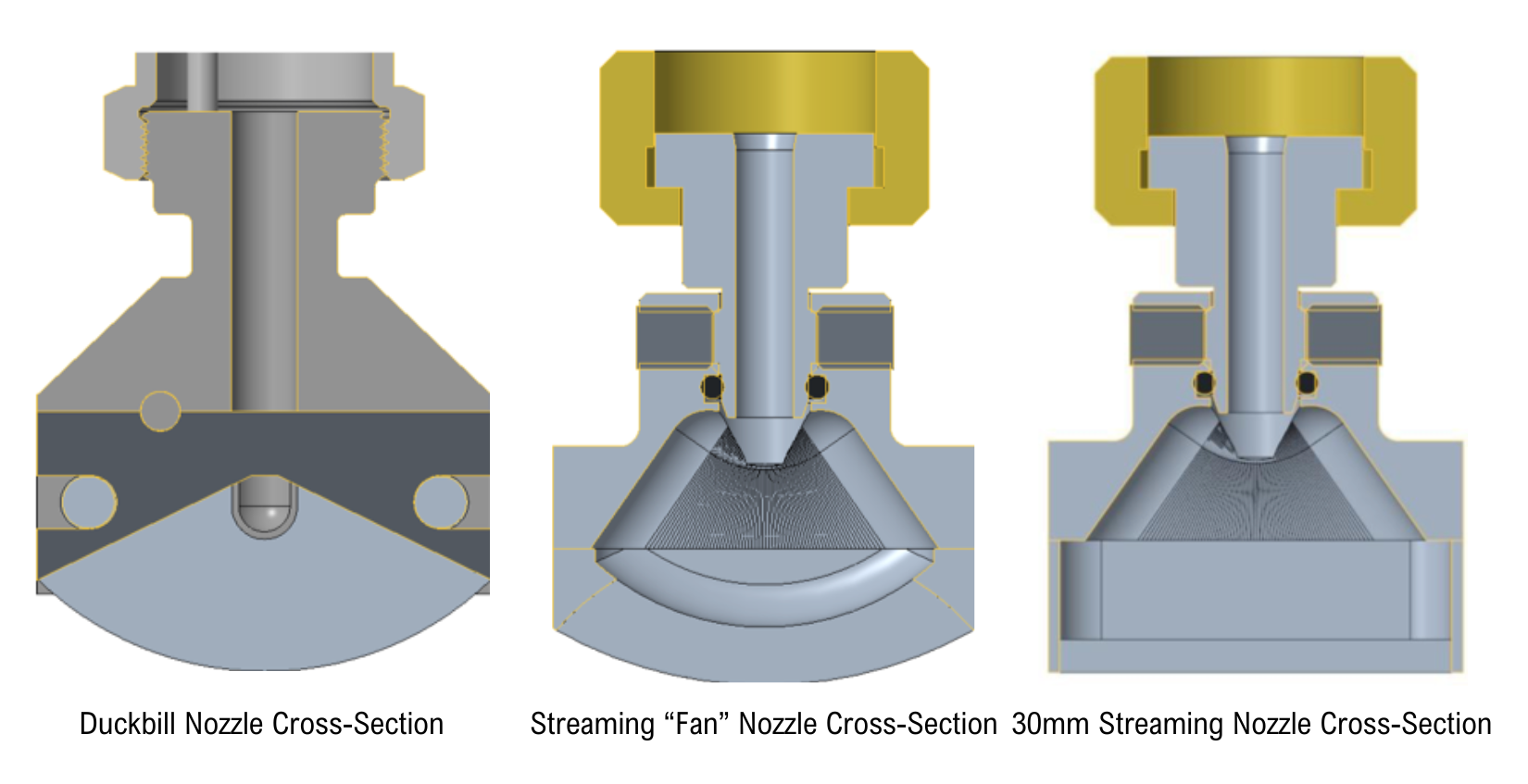DOWSIL™ FC-2024: Single Component Fire Protection Coating
To simplify battery fire protection, Dow Inc. developed a one component (1K) fire and blast resistant material, and then turned to Graco for an effective dispensing solution.

Single Component Fire Protection Coating
Graco’s complete solution for dispensing battery fire protection material includes a Switch 3D Gun integrated with a Precision Continuous Flow (PCF) Metering and Dispensing System.
Fire and Blast Resistant Coating Protects Against Thermal Runaway
Applying fire and blast resistant coating onto an electric vehicle (EV) battery pack housing provides significant thermal and electrical protection. During exposure to extreme heat (as in the case of a thermal runaway event), the coating forms a ceramic barrier that prevents further damage to the battery pack and vehicle.
To improve EV safety, Dow Inc., a leading materials science company, has developed a line of battery fire protection materials. For more about Dow silicones for battery fire protection…
- visit www.dow.com/BatterySystems
- download this product selection guide: Battery fire protection: Materials that can take the heat
Simplifying EV Battery Fire Protection
When any battery fire protection coating is sprayed over a battery pack lid, other components must be covered or masked. To reduce the need for masking, Dow Inc. developed a one component (1K) silicone coating – DOWSIL™ FC-2024 Battery Fire Protection Coating – that can be streamed precisely, not sprayed, onto the desired substrate.
For an effective application solution for the new 1K battery fire protection material, Dow Inc. turned to Graco.
At the Graco Customer & Innovation Center in North Canton, OH, application lab engineers worked with Dow Inc. scientists and chemical engineers on how to evenly stream DOWSIL™ FC-2024 Battery Fire Protection Coating onto an EV battery enclosure with an ideal target wet thicknesses of 1.0 to 3.0 mm, as determined by specific battery design and protection needs..
The testing process involved five stages:
- RHEOLOGY – Verify the material characteristics and conduct a gravity test.
- DISPENSE CHARACTERISTICS – Define the optimal equipment settings and tip configuration for the material and application.
- DISPENSE ON PANELS – Using the data collected from previous tests, apply the material on aluminum, steel, and e-coated steel panels.
- VERTICAL DISPENSE – Using the data collected from previous tests, apply the material on a vertical surface
- DISPENSE ON PARTIAL BATTERY LID – A EV battery lid, made of composite, included a deep vertical trough area, ideal for testing vertical sag of the material.
Battery Lid Dispense

Battery Lid Trough Dispense

1K EV Battery Fire Protection Application Solution
Testing showed that a Switch 3D Gun integrated with a Precision Continuous Flow (PCF) Metering and Dispensing System effectively applies DOWSIL™ FC-2024 Fire Protection Coating. The 1K fireproofing solution can consistently achieve the target thickness with an approximate maximum width of 30 to 50 mm, depending on the streaming nozzle used.
Graco engineers designed three streaming nozzles for DOWISIL™ FC-2024 Silicone Coating application.

They used computational fluid dynamics (CFD) modeling to improve the internal architecture of each nozzle and alleviate localized shear issues that could cause rippling in the overlay of the streamed material.
All trademarks and registered trademarks are the property of their respective owners.
Contact an EV Battery Expert
We understand the complexity of battery designs, and how material application affects their manufacturability. We look forward to collaborating with you to improve your battery manufacturing processes.
Recommended Products
For applying DOWSIL™ FC-2024 Battery Fire Protection Coating
Related Applications & Materials
Thermal Management (Gap Filler)
Thermal management dissipates excessive heat away from a part, so that it functions properly and does not combust. In electric vehicle (EV) batteries, thermal management usually involves gap fillers or thermal interface materials (TIMs).
Thermal Management
As we move quickly towards electrification, consumer and industrial demand for greater functionality with a smaller product footprint make managing the thermal load critical to product life cycles and reliability.
Thermal Interface Materials
Thermal interface material (TIM) dissipates heat away from components, thus improving their speed, longevity, and manufacturability. Batteries and electronics especially need heat dissipation so that they perform as consumers expect.
Related Articles
Battery Pack Seal - EV Battery
A quality seal is critical for the performance and longevity of EV batteries and for protecting integral components from water intrusion and other harsh environmental conditions.
Thermal Management for EV Battery and Electronics Manufacturing
Whether it’s assembling electric vehicle (EV) batteries and electronic products, or miniaturizing printed circuit boards (PCBs), thermal management remains crucial to longevity, efficiency and safety.
Extreme Material Abrasiveness? Problem Solved with Elite
Some thermal interface materials (TIMs) are so abrasive, it’s like pumping diamond dust or liquid sandpaper. Explore why and how we developed Elite™, the longest-lasting pump construction for abrasive material dispense.




